Amazing Astronomy: Space Crafts for Kids
Are you ready to embark on an exciting journey through the cosmos? is your ticket to exploring the universe with creativity and imagination! Astronomy can seem like a vast and daunting subject, but it doesn’t have to be. By engaging in fun and interactive crafts, children can learn about the planets, stars, and galaxies while developing their artistic skills. Imagine building your own solar system or crafting a rocket that can soar through the air! These hands-on activities not only make learning enjoyable but also ignite a passion for science and exploration.
Space crafts are more than just a pastime; they serve as an engaging gateway for kids to dive into the world of astronomy. Each project allows them to express their creativity while absorbing educational insights about the universe. Whether it's creating models of the planets or designing their own constellations, kids will find themselves captivated by the mysteries of space. Plus, these crafts can be done with simple materials often found at home, making it accessible for everyone.
As we journey through this article, we will explore various space-themed crafts that are perfect for kids of all ages. From building rockets to creating stunning dioramas of the solar system, each activity is designed to foster curiosity and enhance learning. So, grab your craft supplies and let’s blast off into the exciting world of astronomy!
- What age group are these crafts suitable for? These crafts are designed for children aged 5 and up, with adult supervision recommended for younger kids.
- Do I need special materials to get started? Most crafts can be made with common household items like cardboard, paper, and paints.
- How can these crafts help my child learn? Each craft is tied to an astronomical concept, helping children understand complex ideas in a fun and engaging way.
- Can these activities be done in a classroom setting? Absolutely! These crafts are perfect for group activities in schools or science clubs.
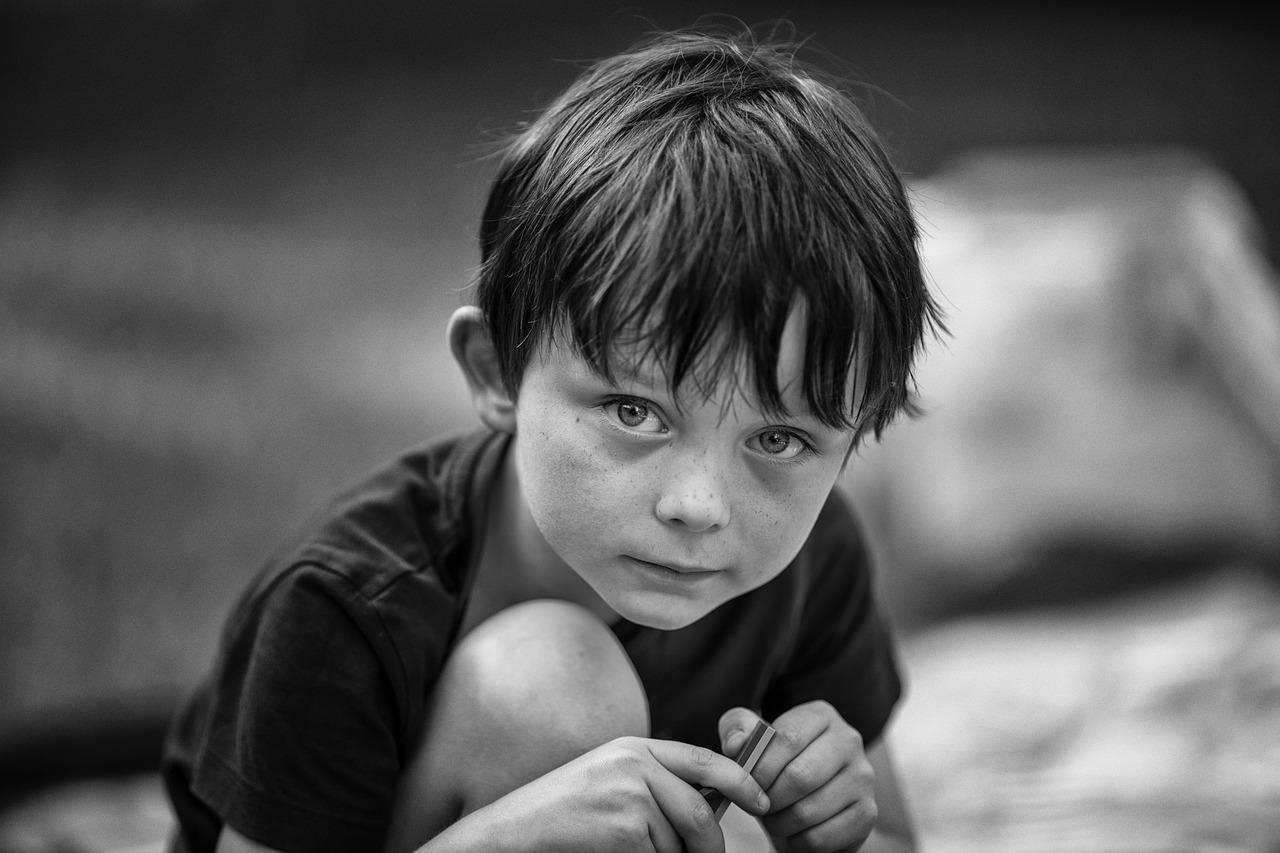
Introduction to Space Crafts
Welcome to the enchanting universe of space crafts, where creativity meets the cosmos! Engaging kids in astronomy through hands-on activities is not just fun; it's a fantastic way to spark their curiosity about the universe. Imagine your child transforming a simple piece of cardboard into a dazzling rocket or a colorful planet! These projects serve as an engaging gateway for children to explore the mysteries of space while exercising their imagination and creativity.
Space crafts are more than just arts and crafts; they are a bridge to understanding complex concepts in astronomy. When kids create models of planets or simulate rocket launches, they grasp the fundamental ideas of our solar system and beyond. This interactive approach makes learning enjoyable and memorable, allowing them to retain knowledge long after the craft is completed. Plus, it fosters a sense of accomplishment as they see their creations come to life!
Moreover, these activities can be tailored to various age groups, ensuring that every child can participate and learn at their own pace. Whether they're using simple materials from around the house or more sophisticated craft supplies, the possibilities are endless. The beauty of space crafts lies in their ability to combine education with fun, making the wonders of the universe accessible to young minds.
So, what can kids expect from these space-themed projects? They’ll embark on a thrilling journey of exploration, learning about:
- The characteristics of different planets
- The principles of rocketry and propulsion
- The vastness of the solar system
- The beauty of stars and constellations
Through these engaging activities, children not only learn about astronomy but also develop essential skills such as problem-solving, critical thinking, and teamwork if they work in groups. It’s a win-win situation! So grab your craft supplies and get ready to launch into an exciting adventure of space exploration!

Materials Needed for Space Crafts
When diving into the exciting universe of space crafts, having the right materials at your fingertips is essential for sparking creativity and ensuring a smooth crafting experience. Whether your young astronomers are building rockets or creating stunning planetary dioramas, the materials they use can make all the difference. The beauty of space crafts is that they can often be made with items you already have around the house, making them not only fun but also accessible and budget-friendly.
To get started, here’s a list of some essential materials that will help your kids unleash their inner astronaut:
- Cardboard and Paper: These versatile materials can be transformed into anything from rockets to planets. Kids can use old cereal boxes or scrap paper to create their cosmic masterpieces.
- Paints and Glitters: Adding a splash of color to their projects can make them come alive! Paints can represent the colorful aspects of the universe, while glitters can mimic the twinkling stars.
- Scissors and Glue: Basic tools like scissors and glue are vital for cutting and assembling their creations, allowing for hands-on engagement.
- Markers and Crayons: These are perfect for adding details and personal touches to their crafts, helping kids express their unique artistic flair.
- String and Wire: Useful for hanging projects like solar system mobiles or for adding structural support to 3D models.
In addition to these materials, you can also incorporate recyclable items into your crafts. This not only promotes creativity but also teaches kids about sustainability. For instance, plastic bottles can be transformed into rocket bodies, while old CDs can serve as planets or stars in a diorama. By using recyclable materials, children learn to think outside the box and appreciate the importance of caring for our planet.
As you gather these materials, remember that the goal is to have fun and explore the wonders of the universe together. Each craft project can turn into a learning opportunity, allowing children to discover more about space while developing their fine motor skills and creativity. So, roll up your sleeves, gather your supplies, and get ready for an out-of-this-world crafting adventure!
1. What age group is suitable for space crafts?
Most space crafts can be adapted for various age groups. Younger kids may need more guidance and simpler projects, while older children can handle more complex crafts involving engineering concepts.
2. Can I use materials from around the house?
Absolutely! Many space crafts can be made using common household items. This not only saves money but also encourages creativity by repurposing items that might otherwise be thrown away.
3. Are space crafts educational?
Yes! Space crafts provide a fun and interactive way for children to learn about astronomy, the solar system, and environmental sustainability. Each project can spark curiosity and lead to further exploration of scientific concepts.
4. How can I encourage my child to be more creative with space crafts?
Encourage your child to experiment with different materials and techniques. Allow them to express their ideas freely and support their imaginative choices, whether it’s using unconventional materials or coming up with unique designs.

Recyclable Materials
When it comes to crafting, are a treasure trove of possibilities. They not only ignite creativity but also impart valuable lessons about sustainability and environmental responsibility to children. Imagine transforming an old cereal box into a magnificent rocket or using plastic bottles to create vibrant planets! These activities not only keep waste out of landfills but also provide a hands-on approach to learning about our universe.
Some common recyclable materials that can be used for space crafts include:
- Cardboard: Perfect for building rockets, spaceships, and even entire solar systems. Its sturdy nature allows for a variety of creative expressions.
- Plastic Containers: These can be turned into planets or even used as bases for 3D models. They're lightweight and easy to paint!
- Egg Cartons: These can be transformed into miniature planets or used to create a model of the solar system, with each cup representing a different celestial body.
- Old Magazines: Cut out images of stars, planets, and astronauts to create collages or dioramas, giving a new life to outdated materials.
Utilizing these materials not only fosters creativity but also encourages kids to think about the impact of waste on our planet. By making space crafts from items that would otherwise be discarded, children learn that they can make a difference, one project at a time. Plus, the joy of transforming something old into something new is a rewarding experience that can spark a lifelong passion for both crafting and environmental stewardship.
Incorporating recyclable materials into space-themed projects can lead to unexpected surprises. For instance, using a simple cardboard tube can become a telescope, allowing children to explore the stars from their own backyard. The possibilities are endless, and the best part is that it allows kids to engage with science in a fun and interactive way!
Q: What types of recyclable materials are best for space crafts?
A: Common materials include cardboard, plastic containers, egg cartons, and old magazines. These items can be transformed into various space-themed projects, encouraging creativity and learning.
Q: How can using recyclable materials teach kids about sustainability?
A: By using items that would typically be thrown away, children learn the importance of recycling and reusing. This hands-on experience helps them understand their role in protecting the environment.
Q: Are there any safety concerns when using recyclable materials?
A: Always supervise children when using scissors, glue, or paints. Ensure that materials are clean and safe to handle. It's also a good idea to avoid sharp or broken items.
Q: Can these crafts be educational?
A: Absolutely! Each project can be a fun way to teach children about astronomy, such as the characteristics of planets, the concept of orbits, and the vastness of space.
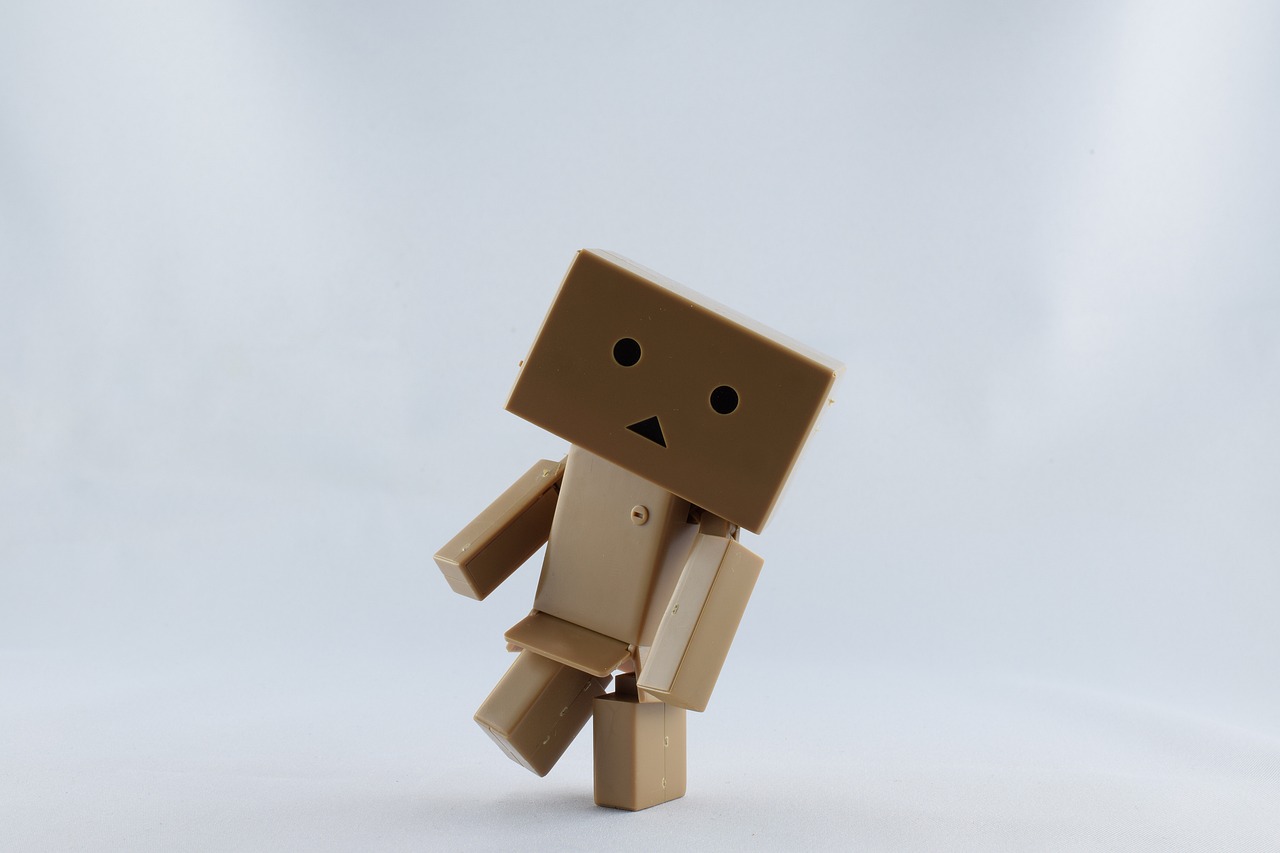
Cardboard and Paper
When it comes to crafting, are two of the most versatile materials you can use. These everyday items can be transformed into a plethora of space-themed projects, sparking creativity and imagination in kids while teaching them about the wonders of our universe. Imagine building a model of a rocket ship or creating a colorful representation of the planets in our solar system—all from simple cardboard boxes and sheets of paper!
Cardboard is especially great for larger projects. Its sturdy nature allows for the construction of 3D models, such as rockets or space stations. Kids can cut, fold, and glue pieces together to create their very own spacecraft. Additionally, they can paint or decorate their cardboard creations with vibrant colors, making every project unique. Paper, on the other hand, is perfect for smaller details. Think of using paper to make planets, stars, or even astronauts. The possibilities are endless!
One of the best parts about using cardboard and paper is that they are easily accessible. Most households have leftover cardboard from deliveries or paper scraps from previous projects. This not only makes crafting affordable but also promotes sustainability by reusing materials that would otherwise go to waste. Encouraging kids to think about recycling while they create can foster a sense of responsibility towards the environment.
Here are some fun ideas to get started with cardboard and paper crafts:
- Rocket Ship Models: Use cardboard tubes and boxes to build a rocket ship. Paint it with bright colors and add some glitter for that cosmic touch!
- Planet Cutouts: Cut out different sizes of circles from colored paper to represent the planets. Kids can label them and learn about each planet's characteristics.
- Space Scene Collages: Create a collage of a space scene using paper cutouts of planets, stars, and spaceships. This can be a great way to tell a story about an astronaut's journey!
In conclusion, cardboard and paper are not just materials; they are gateways to creativity and learning. They allow children to express themselves artistically while diving deep into the fascinating world of astronomy. So, gather your supplies, unleash your imagination, and let the cosmic adventures begin!

Paints and Glitters
Discover how space crafts serve as an engaging gateway for kids to learn about astronomy, encouraging creativity while providing educational insights into the wonders of the universe.
A list of essential materials and supplies that make space-themed crafts fun and accessible for children, ensuring they have everything they need to create their own cosmic masterpieces.
Utilizing recyclable materials for space crafts not only promotes creativity but also teaches kids about sustainability, making their projects environmentally friendly while having fun.
Cardboard and paper are versatile materials that can be transformed into various space-themed projects, from rockets to planets, allowing kids to explore their artistic side.
Incorporating paints and glitters into space crafts adds a splash of color and a touch of magic, making every project come alive. Imagine your child creating a vibrant, swirling galaxy on a canvas or a shimmering starry sky on a cardboard backdrop! The use of paints not only enhances the visual appeal but also provides a hands-on experience that helps children understand color mixing and artistic techniques.
When selecting paints, consider using non-toxic, washable options that are safe for kids. Acrylic paints are fantastic for their vibrant colors and quick drying time, while watercolor paints can offer a more fluid, dreamy effect. Glitters, on the other hand, bring an element of sparkle that can turn a simple craft into something truly extraordinary. They can be sprinkled over painted surfaces or used to outline stars and planets, creating a dazzling effect that captures the imagination.
Here are some creative ways to use paints and glitters in space crafts:
- Galaxy Jars: Fill jars with layers of painted cotton balls and sprinkle glitter to mimic stars.
- Planet Painting: Use different colors to represent the unique features of each planet.
- Starry Skies: Create collages using dark paper, paints, and glitters to represent constellations.
By allowing children to experiment with these materials, you’re not just fostering their artistic expression; you’re also teaching them about the beauty of the universe. Each brush stroke and sprinkle of glitter can spark a conversation about the stars, planets, and the mysteries of space. So, let them get messy and creative—after all, the universe is a vast canvas waiting to be explored!
Explore imaginative craft ideas that focus on creating models of the planets, allowing children to learn about their characteristics and positions in the solar system while having fun.
Learn how to create simple yet exciting rocket models using everyday materials, providing kids with a hands-on way to understand rocketry and space travel.
Paper rockets are easy to make and can be launched with a simple straw, teaching kids about propulsion and the science behind rocket launches in an engaging manner.
Creating 3D rocket models using various craft supplies allows kids to explore engineering concepts while enhancing their understanding of space missions and the design of spacecraft.
Craft activities that focus on the solar system help children visualize and understand the relationship between planets, their orbits, and the sun, making astronomy more relatable.
Building a solar system mobile is a fun way for kids to learn about the distances and sizes of planets, encouraging them to appreciate the vastness of space.
Creating planetary dioramas allows children to depict their understanding of different planets and their environments, enhancing their creativity while reinforcing astronomical concepts.
Engaging with stars and constellations through crafts helps children learn about the night sky, fostering a sense of wonder and curiosity about the universe.
Starry night crafts, such as painting or creating starry sky collages, inspire kids to explore constellations and the stories behind them, making astronomy accessible and enjoyable.
Constellation projects encourage children to identify and recreate their favorite constellations, enhancing their observational skills and understanding of the patterns in the night sky.
Reflecting on how space crafts ignite curiosity and creativity in children, inspiring a lifelong interest in astronomy and the wonders of the universe.
Q1: What age group is suitable for space crafts?
A1: Space crafts can be enjoyed by children of all ages, but the complexity of the crafts can be adjusted based on the child's age and skill level.
Q2: Are the materials for these crafts expensive?
A2: Not at all! Many materials can be found around the house or purchased at low-cost craft stores, making space crafts accessible to everyone.
Q3: How do space crafts help in learning?
A3: Space crafts engage children in hands-on learning, fostering creativity while teaching them about astronomy, science, and the environment.
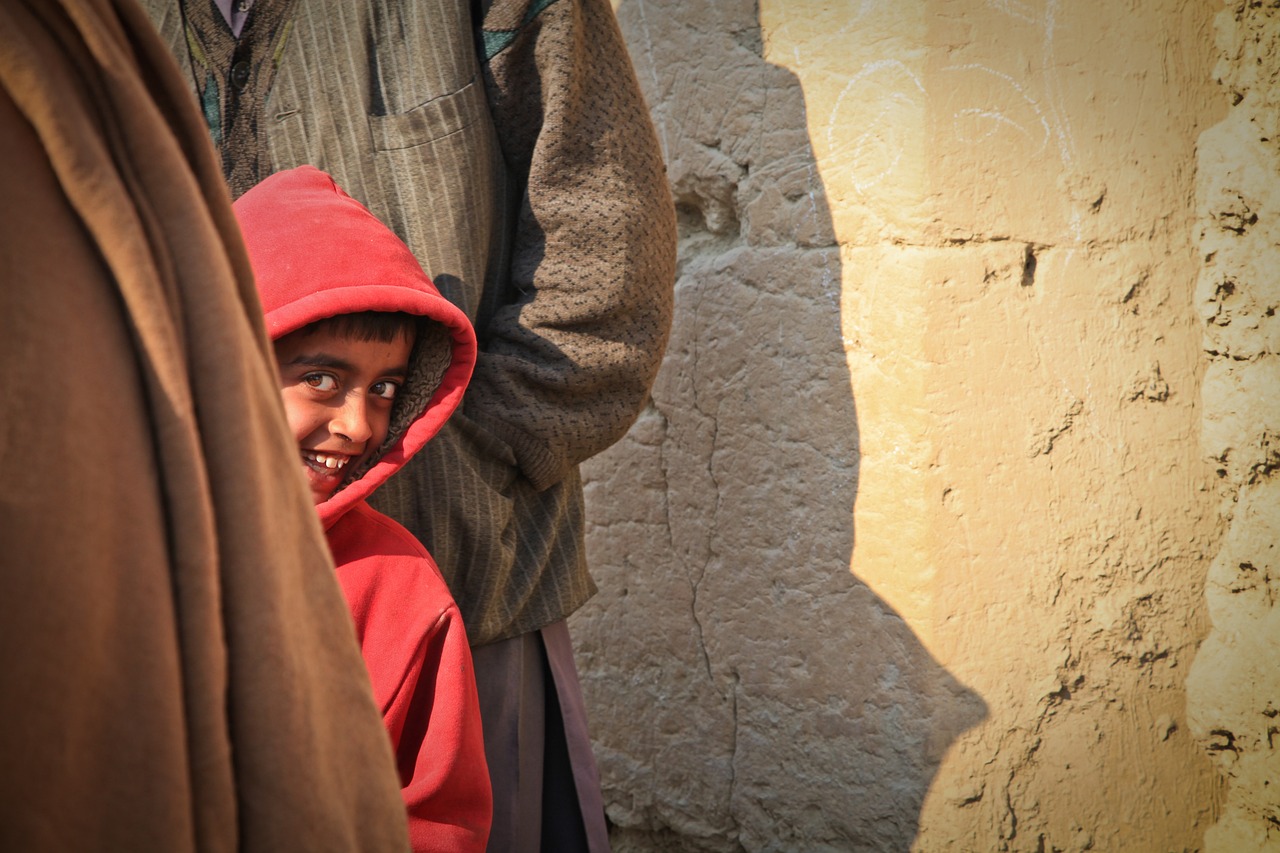
Craft Ideas for Planets
When it comes to exploring the cosmos, creating models of the planets is an exciting way for kids to dive into the wonders of our solar system. Crafting these celestial bodies not only ignites their imaginations but also helps them grasp the unique characteristics of each planet. Imagine your child sculpting a vibrant, colorful Jupiter or a shimmering, icy Neptune! Here are some engaging craft ideas that will take your little astronomers on a journey through space.
One fantastic project is to create 3D planet models using materials like Styrofoam balls, paint, and craft supplies. Each planet can be painted to reflect its distinct colors and features. For instance, kids can use orange and red hues for Mars, or shades of blue and green for Earth. This hands-on activity allows children to explore the concept of scale, as they can compare the sizes of the planets while creating their models.
Another fun idea is to make planetary orbs using paper mache. This craft involves layering strips of newspaper over a balloon, which serves as the base. After the paper mache dries, kids can pop the balloon and paint the resulting orb to represent their favorite planet. This method not only teaches patience and creativity but also introduces children to the concept of layering and structure, which are essential in understanding how planets are formed.
For those who enjoy a bit of technology, consider creating a digital planetarium. Kids can use simple software or apps to design their own planets, complete with unique characteristics and orbits. This interactive project merges creativity with technology, making it a perfect fit for the modern learner. They can even present their planets to family and friends, explaining the science behind their creations!
To further enhance the learning experience, why not incorporate a planet fact sheet with each craft? As kids create their models, they can research interesting facts about their chosen planets. For instance, they might learn that Saturn is known for its stunning rings or that Venus is often called Earth's twin due to its similar size. By combining crafting with research, children develop a deeper understanding of astronomy.
Lastly, consider hosting a planet craft day where kids can work together on their projects. This collaborative environment encourages teamwork and sharing of ideas, making the learning experience even more enriching. They can showcase their creations in a mini-exhibition, allowing them to explain what they learned about each planet to their peers.
In summary, crafting planet models is a delightful way to introduce kids to the fascinating world of astronomy. Through creative expression and hands-on activities, children can explore the characteristics of each planet while developing their artistic skills. So gather those materials and let your kids' imaginations soar as they embark on their cosmic crafting adventure!
Common materials include Styrofoam balls, cardboard, paint, paper mache, and even recyclable items like bottles and cans. The choice of materials can depend on the type of craft and the age of the children involved.
Encourage kids to research their chosen planets and create fact sheets that accompany their crafts. This way, they can learn interesting facts while they create, enhancing their understanding of astronomy.
Yes! Space crafts can be adapted for various age groups. Younger children might enjoy simpler projects like painting, while older kids could tackle more complex tasks like building 3D models or digital planetarium designs.
Absolutely! Many space crafts can be done indoors, making them perfect for rainy days or educational activities at home. Just be sure to cover surfaces to protect them from paint and glue!
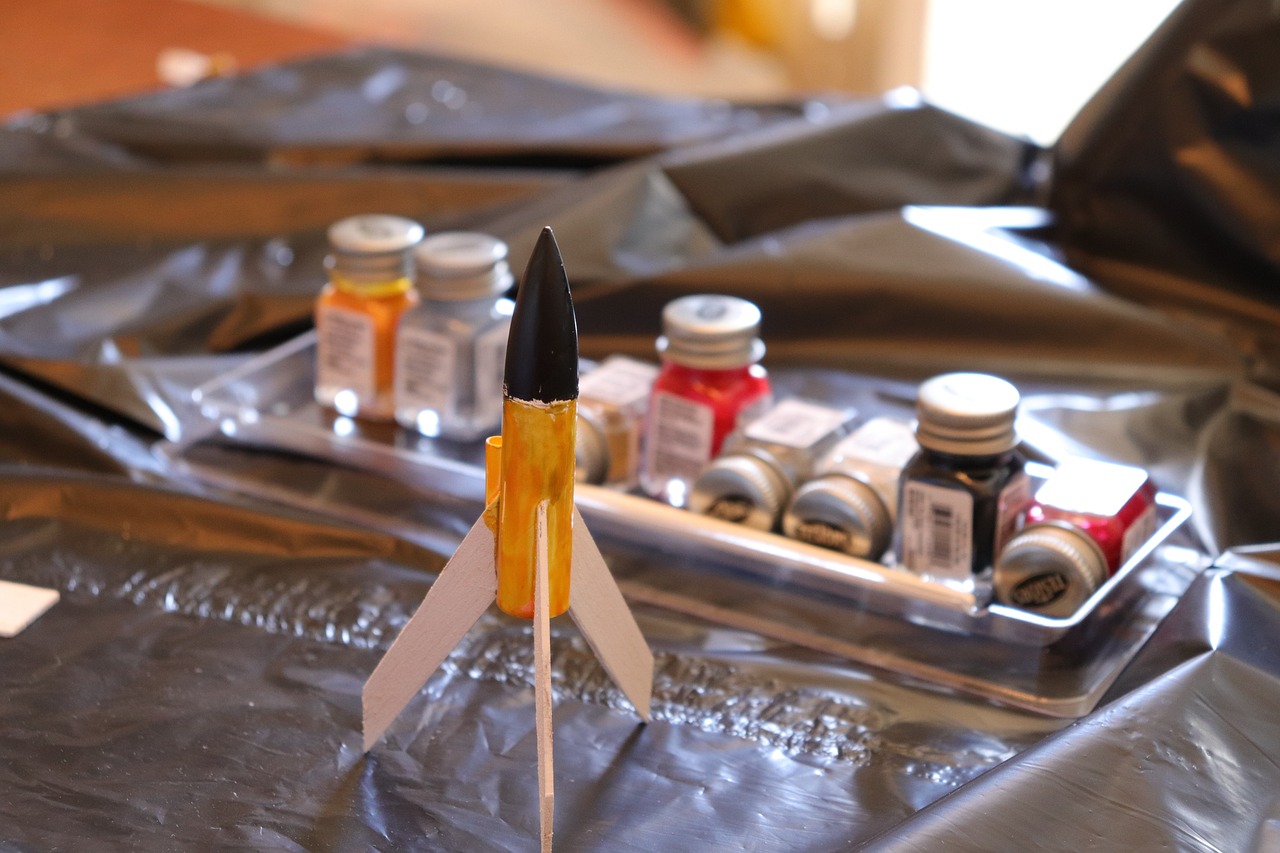
Building Rockets
Creating rockets is not just a fun craft; it’s an exciting way to delve into the world of rocketry and space travel! Kids can learn about the principles of flight and propulsion while engaging in hands-on activities that spark their imagination. Imagine the thrill of launching a rocket made from everyday materials and watching it soar into the sky! This experience not only captivates young minds but also lays the groundwork for understanding the science behind space exploration.
One of the simplest and most enjoyable ways to start building rockets is by making paper rockets. These rockets are incredibly easy to construct and can be launched using a common straw. Kids can decorate their rockets with colorful markers or stickers, turning them into unique creations that reflect their personalities. When they launch the rockets, they’ll get to see firsthand the concept of propulsion in action. It’s like a mini science experiment that’s both educational and exhilarating!
For those looking to take their rocket-building skills to the next level, creating 3D rocket models using various craft supplies can be an exciting challenge. Using materials like cardboard tubes, plastic bottles, and even old toy parts, children can construct detailed models that resemble real spacecraft. This activity not only enhances their engineering skills but also allows them to learn about the different components of rockets, such as the fuselage and fins. As they assemble their rockets, they can discuss the various missions that these incredible machines have undertaken, from launching satellites to exploring distant planets.
To make the rocket-building experience even more educational, parents and educators can incorporate discussions about famous rockets and space missions. For example, they can talk about NASA's Saturn V, which took astronauts to the moon, or SpaceX’s Falcon 9, known for its reusable technology. By connecting the craft to real-world events, kids will feel a deeper connection to the subject matter, igniting their curiosity and passion for space.
In addition to building rockets, it’s essential to encourage kids to experiment with different designs and materials. They can test how changes in shape, size, and weight affect their rockets' flight. This kind of experimentation fosters critical thinking and problem-solving skills, which are invaluable in all areas of learning. Whether they’re designing a rocket that flies the highest or one that stays in the air the longest, the possibilities are endless!
To wrap up the rocket-building adventure, consider organizing a rocket launch day where kids can showcase their creations. Not only will this be a fun event, but it will also give them the opportunity to share their knowledge and excitement about space with friends and family. Watching their rockets launch into the sky will be a moment of triumph and joy, solidifying their interest in astronomy and science.
Q: What materials do I need to build a paper rocket?
A: You will need a piece of paper, scissors, tape, and a straw. You can also use markers or stickers for decoration!
Q: How can I make my rocket fly higher?
A: Experiment with different rocket designs. You can try adjusting the weight by adding or removing materials, or change the shape of the rocket's fins to see how it affects flight.
Q: Is it safe to launch rockets indoors?
A: It’s best to launch rockets outdoors in an open area to ensure safety and avoid any accidents. Always supervise children during the launch.

Paper Rockets
Creating is not only a fun activity for kids but also an engaging way to introduce them to the fascinating world of rocketry and physics. With just a few simple materials, children can design, build, and launch their very own rockets, all while learning about the principles of propulsion and aerodynamics. Imagine the thrill on their faces as they watch their creations soar into the air!
To get started, all you need are some basic supplies that you likely already have at home. Here’s a quick list of what you’ll need:
- Paper (construction paper or regular printer paper)
- Straws (any standard drinking straw will do)
- Scissors
- Tape or glue
- Markers or crayons for decoration
Once you have gathered your materials, it's time to unleash your creativity. Begin by cutting the paper into a rectangular shape, which will form the body of your rocket. Then, you can roll it into a tube and secure it with tape or glue. Next, create fins by cutting out small triangles from the paper and attaching them to the bottom of the rocket. These fins are crucial as they help stabilize the rocket during flight.
After your rocket is assembled, it’s time for the most exciting part: launching! Insert the straw into the bottom of the rocket. To launch, simply blow into the straw with a quick puff of air. The force of your breath will propel the rocket into the sky! This simple action demonstrates the basic principles of thrust and propulsion, making it a fantastic learning experience.
Encourage kids to experiment with different designs and sizes of rockets. Ask them questions like, “What happens if we make the rocket longer?” or “Will adding more fins change how it flies?” This kind of experimentation not only makes the activity more fun but also fosters critical thinking and problem-solving skills.
To make the activity even more educational, you can introduce concepts such as gravity and air resistance. Discuss how these forces affect the rocket's flight and how engineers account for them when designing real spacecraft. This hands-on experience combined with theoretical knowledge can ignite a passion for science and engineering in young minds.
Finally, consider organizing a rocket launch competition among friends or family. Set up a designated launch area and see whose rocket can fly the highest or travel the farthest. This not only adds an element of friendly competition but also encourages teamwork and communication as kids share tips and tricks for optimizing their rocket designs.
Q: What age group is suitable for making paper rockets?
A: Paper rockets can be made by children as young as 5 years old with adult supervision. Older children can take on more complex designs and experiments.
Q: Do I need any special materials to make paper rockets?
A: No, you can use common household items like paper, straws, and tape. This makes it an accessible and low-cost project.
Q: Can we decorate the rockets?
A: Absolutely! Kids can use markers, stickers, or paint to personalize their rockets, making the activity even more enjoyable.
In conclusion, making paper rockets is a delightful way to combine creativity with science. Through this simple craft, children learn about the exciting world of space while developing essential skills that will serve them well in their educational journeys.

3D Rocket Models
Discover how space crafts serve as an engaging gateway for kids to learn about astronomy, encouraging creativity while providing educational insights into the wonders of the universe.
A list of essential materials and supplies that make space-themed crafts fun and accessible for children, ensuring they have everything they need to create their own cosmic masterpieces.
Utilizing recyclable materials for space crafts not only promotes creativity but also teaches kids about sustainability, making their projects environmentally friendly while having fun.
Cardboard and paper are versatile materials that can be transformed into various space-themed projects, from rockets to planets, allowing kids to explore their artistic side.
Incorporating paints and glitters adds vibrancy and excitement to space crafts, helping kids express their creativity while learning about the colorful aspects of the universe.
Explore imaginative craft ideas that focus on creating models of the planets, allowing children to learn about their characteristics and positions in the solar system while having fun.
Learn how to create simple yet exciting rocket models using everyday materials, providing kids with a hands-on way to understand rocketry and space travel.
Paper rockets are easy to make and can be launched with a simple straw, teaching kids about propulsion and the science behind rocket launches in an engaging manner.
Creating is not just a fun activity; it’s a fantastic way to introduce kids to the fascinating world of engineering and space exploration. By using various craft supplies such as cardboard, foam, and paint, children can construct their very own rockets that stand tall and proud. Imagine the thrill of seeing a rocket they built themselves, complete with colorful designs and intricate details!
The process of building a 3D rocket model can be broken down into several exciting steps:
- Designing the Rocket: Start by sketching out the rocket design. Encourage kids to think about the shape, size, and colors they want to use.
- Gathering Materials: Collect materials like cardboard tubes, paper cups, and paint. These items can be easily found around the house or at a local craft store.
- Assembling the Rocket: Cut out the parts of the rocket and assemble them using glue or tape. This is where creativity shines—kids can add fins, a nose cone, and decorations!
- Painting and Decorating: Let kids unleash their artistic flair by painting their rockets and adding stickers or glitter for that extra sparkle.
Not only does this activity promote creativity, but it also provides a hands-on lesson in physics. As they build and eventually launch their rockets (even if it’s just a paper rocket), children will grasp essential concepts like thrust, gravity, and aerodynamics. It’s like a mini science lesson wrapped in a fun craft project!
Craft activities that focus on the solar system help children visualize and understand the relationship between planets, their orbits, and the sun, making astronomy more relatable.
Building a solar system mobile is a fun way for kids to learn about the distances and sizes of planets, encouraging them to appreciate the vastness of space.
Creating planetary dioramas allows children to depict their understanding of different planets and their environments, enhancing their creativity while reinforcing astronomical concepts.
Engaging with stars and constellations through crafts helps children learn about the night sky, fostering a sense of wonder and curiosity about the universe.
Starry night crafts, such as painting or creating starry sky collages, inspire kids to explore constellations and the stories behind them, making astronomy accessible and enjoyable.
Constellation projects encourage children to identify and recreate their favorite constellations, enhancing their observational skills and understanding of the patterns in the night sky.
Reflecting on how space crafts ignite curiosity and creativity in children, inspiring a lifelong interest in astronomy and the wonders of the universe.
Q1: What age group is suitable for space crafts?
A1: Space crafts are suitable for children of various ages, typically starting from around 4 years old, but can be enjoyed by older kids as well, especially with more complex projects.
Q2: Do I need special materials for these crafts?
A2: No, most space crafts can be made using common household items like cardboard, paper, and paints. It's all about creativity!
Q3: Can space crafts help with learning?
A3: Absolutely! Space crafts encourage hands-on learning, which can help children understand complex concepts in astronomy and physics in a fun and engaging way.
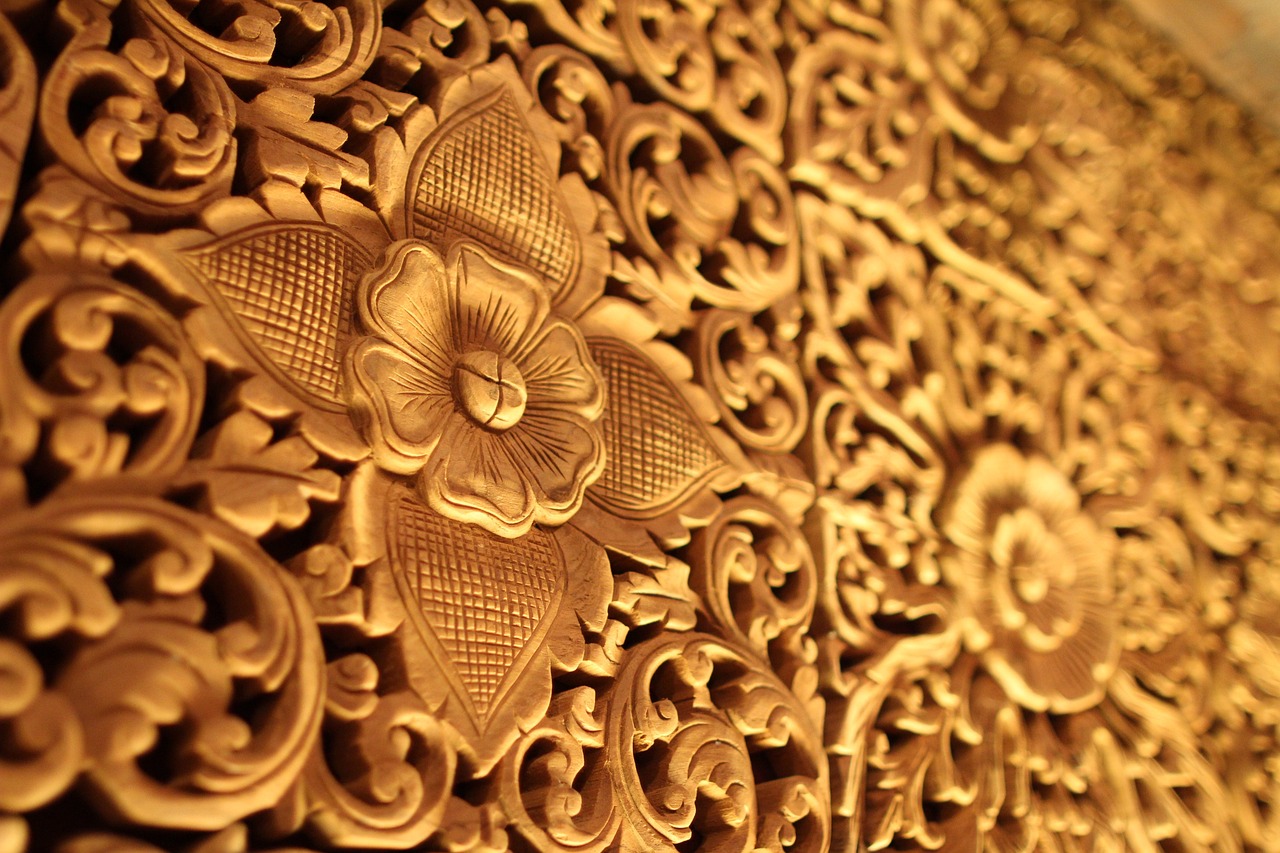
Exploring the Solar System
When it comes to understanding our place in the universe, nothing sparks curiosity quite like exploring the solar system. This cosmic neighborhood is not just a collection of planets; it's a fascinating realm filled with mysteries waiting to be unraveled. By engaging in craft activities that focus on the solar system, children can visualize and comprehend the relationships between the planets, their orbits, and the sun. Imagine creating a vibrant model of the solar system that spins and showcases each planet's unique characteristics! This hands-on approach makes astronomy relatable and exciting.
One of the most effective ways to illustrate the solar system is through interactive projects that allow kids to grasp the vastness of space. For instance, when kids construct a solar system mobile, they not only learn about the sizes and distances of the planets but also gain an appreciation for the scale of our universe. Did you know that the distance between Earth and Mars can vary from about 54.6 million kilometers to over 401 million kilometers? Crafting a mobile can help them visualize these distances in a fun and engaging way!
Another fantastic project is creating planetary dioramas. This activity invites children to depict their understanding of different planets and their unique environments. For example, while crafting a diorama of Jupiter, kids can explore its swirling storms, or when creating a model of Mars, they can learn about its dusty red surface and the possibility of past water flows. These projects not only enhance creativity but also reinforce astronomical concepts, making learning immersive and enjoyable.
To make this exploration even more engaging, consider incorporating a few fun facts about each planet into your craft activities. For example, you could create a table that summarizes key characteristics of the planets:
| Planet | Diameter (km) | Distance from Sun (AU) | Interesting Fact |
|---|---|---|---|
| Mercury | 4,880 | 0.39 | Smallest planet in the solar system. |
| Venus | 12,104 | 0.72 | Hottest planet due to its thick atmosphere. |
| Earth | 12,742 | 1.00 | Only planet known to support life. |
| Mars | 6,779 | 1.52 | Known as the Red Planet. |
| Jupiter | 139,820 | 5.20 | Largest planet with a giant storm called the Great Red Spot. |
| Saturn | 116,460 | 9.58 | Famous for its stunning rings. |
| Uranus | 50,724 | 19.22 | Rotates on its side, making its axis tilt unusual. |
| Neptune | 49,244 | 30.07 | Farthest planet from the Sun, known for its deep blue color. |
By integrating these fun facts into their crafts, children can learn while they create, making the experience both educational and enjoyable. The beauty of exploring the solar system through crafts is that it ignites a sense of wonder and curiosity in kids, encouraging them to ask questions and seek out answers about the universe. So grab those craft supplies, and let your child's imagination soar as they embark on a journey through space!
- What age group is suitable for space crafts?
Space crafts can be enjoyed by children of all ages, but activities can be tailored to suit different skill levels, making them perfect for toddlers to pre-teens. - Do I need special materials for these crafts?
No, many space crafts can be made using common household items and recyclables, making them accessible and eco-friendly. - How can I make learning about space fun for my child?
Incorporating games, stories, and crafts related to space can create an engaging learning environment that sparks curiosity.

Solar System Mobile
Creating a is not just a craft; it's an adventure that takes kids on a journey through the cosmos! This engaging project allows children to visualize the solar system's structure, helping them grasp the relative sizes and distances of the planets from the sun. Imagine your child hanging a beautiful mobile in their room, showcasing the wonders of space right above their heads! With a few simple materials and a sprinkle of imagination, you can transform your living space into a mini-universe.
To start, gather materials such as colored paper, scissors, string, a hanger or a circular frame, and some paint. The first step is to create the planets. Each planet can be made from different colored paper, and you can even add textures using paints or glitters. For example, you might use blue and green for Earth, red for Mars, and yellow for the sun. This not only makes the mobile visually appealing but also provides an opportunity to discuss the unique characteristics of each planet.
Once the planets are crafted, it's time to assemble the mobile. Cut various lengths of string to hang the planets at different heights, simulating their positions in space. You can attach the planets to the hanger or frame in a circular pattern, ensuring that the sun is at the center, just like in our solar system. This arrangement will help kids understand the concept of orbits and the gravitational pull of the sun.
After assembling the mobile, hang it in a well-lit area. As it spins gently, it will mimic the movement of planets around the sun, captivating anyone who sees it. To make this experience even more enriching, consider having a discussion with your child about the planets' orbits, their rotation, and even fun facts like how long a day is on Mars compared to Earth. This way, the Solar System Mobile becomes more than just a craft; it turns into a fascinating learning tool that sparks curiosity and encourages questions about our universe.
- What materials do I need to make a Solar System Mobile?
You will need colored paper, scissors, string, a hanger or circular frame, and paint or glitter for decoration. - How can I teach my child about the solar system while making this craft?
Discuss the characteristics of each planet, their distances from the sun, and their orbits while creating the mobile. You can also share fun facts about each planet. - Can we include other celestial bodies in the mobile?
Absolutely! You can add stars, asteroids, and even moons to make the mobile more comprehensive and visually interesting.
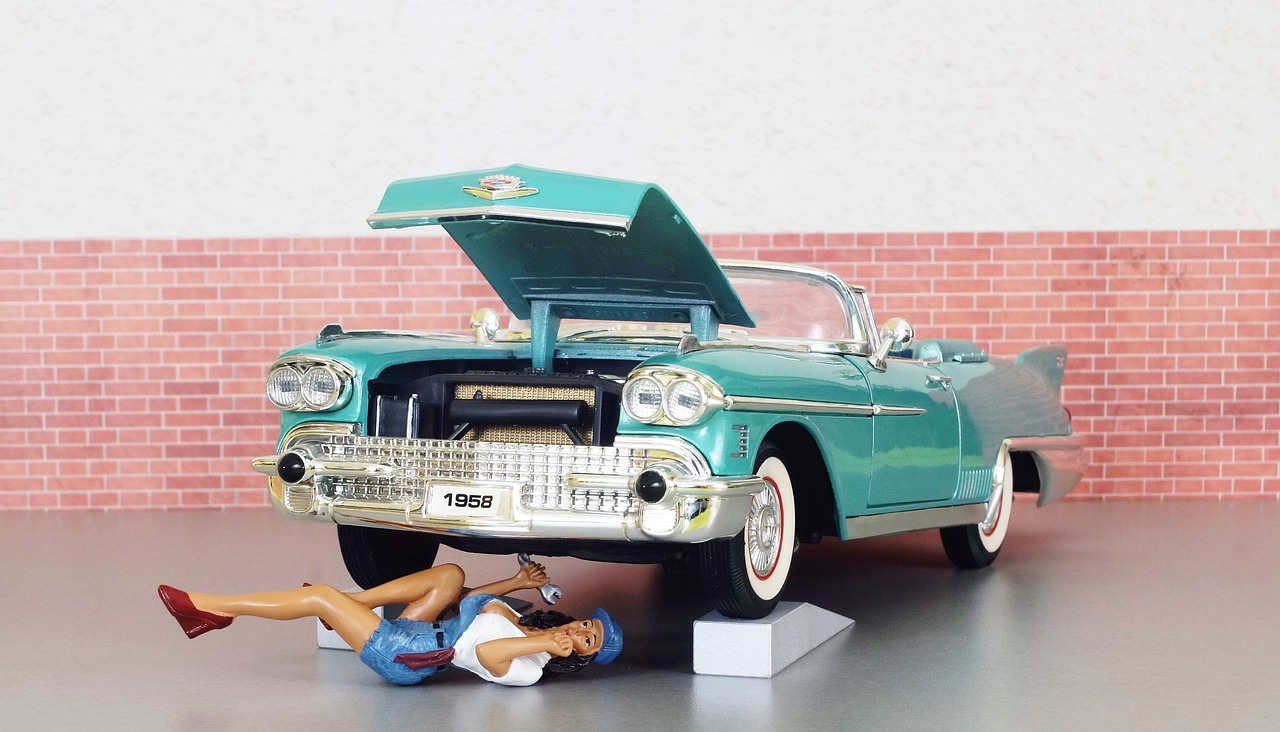
Planetary Dioramas
Creating is not just a fun craft; it’s an exciting way for kids to dive deep into the fascinating world of astronomy! Imagine transforming a simple shoebox into a vibrant representation of the solar system. Kids can unleash their creativity by depicting the unique features of each planet, from the swirling storms of Jupiter to the icy rings of Saturn. This hands-on activity allows them to visualize the vastness of space and the distinct characteristics of our celestial neighbors.
To get started, gather some basic materials such as a shoebox, colored paper, paints, and figurines or models of the planets. The shoebox serves as the base for the diorama, representing a slice of the universe. Children can paint the interior to resemble the night sky, adding stars and perhaps even a glowing sun. Then, using their imagination, they can create or place models of the planets in their correct order from the sun, helping them learn about the solar system's layout.
As they work on their dioramas, kids can explore various aspects of each planet. For instance, they might research:
- The atmosphere and surface conditions of Mars.
- The rings of Saturn and what they are made of.
- The unique rotation of Venus, which is different from most other planets.
This research not only enriches their project but also enhances their understanding of planetary science. Once the diorama is complete, it can serve as a fantastic educational tool. Kids can present their dioramas to family or classmates, sharing interesting facts they've learned about each planet. This presentation aspect reinforces their knowledge and builds confidence in their public speaking skills.
Moreover, planetary dioramas can be a collaborative project. Children can work in groups, each taking responsibility for a different planet. This teamwork fosters communication and problem-solving skills, as they must decide how to best represent their assigned planet and integrate it into the overall diorama.
In conclusion, creating planetary dioramas is a delightful way for children to learn about the solar system while exercising their creativity. It combines art, science, and teamwork, making astronomy accessible and engaging. So, gather your materials, spark your imagination, and let the adventure into the cosmos begin!
Q: What materials do I need to create a planetary diorama?
A: You will need a shoebox, colored paper, paints, scissors, glue, and any small figurines or models of the planets you wish to include. Recyclable materials can also be great for creating planets.
Q: How can I make my diorama more educational?
A: Researching the planets and including interesting facts or features in your diorama can enhance its educational value. You can also label each planet with its name and a few key facts.
Q: Can I work on this project with friends?
A: Absolutely! Working in groups can make the project more enjoyable and allows for collaboration. Each person can be responsible for a different planet, fostering teamwork.
Q: What age group is this craft suitable for?
A: Planetary dioramas are suitable for a wide range of ages, typically from elementary school to middle school. Younger children may need more guidance, while older kids can take on more complex designs.

Fun with Stars and Constellations
Engaging with stars and constellations through crafts is not just a fun activity; it’s a magical journey into the night sky that helps children learn about astronomy in an interactive way. Imagine standing under a blanket of stars, each one telling a different story. By creating crafts that represent these celestial wonders, kids can foster a sense of curiosity and wonder about the universe. From painting starry skies to crafting their own constellations, these activities make astronomy accessible and enjoyable.
One exciting project is the Starry Night Craft, where children can use paints, glitter, and even glow-in-the-dark materials to create a beautiful representation of the night sky. This hands-on activity not only allows them to express their creativity but also encourages them to explore the constellations and the fascinating tales behind them. For example, they might paint the iconic Big Dipper or the majestic Orion, learning about their significance as they work.
Another engaging activity is the Constellation Project. In this project, kids can identify their favorite constellations and recreate them using various materials. They can use black construction paper as a base and then stick tiny dots of white paint or use star stickers to represent stars. This not only enhances their observational skills but also helps them understand the patterns in the night sky. As they connect the dots, they can share stories about each constellation, making the experience even more enriching.
To further enhance the learning experience, here’s a simple table that outlines some popular constellations along with their meanings and the months they are best viewed:
| Constellation | Meaning | Best Viewed |
|---|---|---|
| Orion | The Hunter | Winter |
| Ursa Major | The Great Bear | All Year |
| Cygnus | The Swan | Summer |
| Scorpius | The Scorpion | Summer |
Through these engaging crafts, children not only develop their artistic skills but also cultivate a deeper appreciation for the stars above. By connecting the dots—literally and figuratively—they learn to see the universe as a vast canvas filled with stories waiting to be discovered. So, grab your materials, gather your little astronauts, and embark on this stellar adventure!
- What materials do I need for star crafts? Common materials include black paper, paints, glitter, star stickers, and scissors.
- How can I teach my child about constellations? Use crafts to recreate constellations, tell their stories, and encourage stargazing during clear nights.
- Are there any easy crafts for younger children? Yes! Simple activities like star stickers on blue paper or painting a night sky with finger paints are great for younger kids.

Starry Night Crafts
Starry night crafts are a fantastic way to spark children's imagination while teaching them about the beauty of the night sky. Imagine a canvas splashed with deep blues and shimmering whites, where kids can recreate the magic of constellations and the twinkling stars that fill our universe. These crafts not only allow children to express their creativity but also serve as a bridge to understanding the stories and science behind the stars.
One of the most exciting aspects of starry night crafts is that they can be adapted for various age groups and skill levels. For younger children, simple activities like painting starry skies or using glitter to create sparkling star collages can be both fun and educational. Older kids, on the other hand, might enjoy more intricate projects like creating 3D star models or even designing their own constellations. The possibilities are endless!
Here are some engaging ideas to get started with starry night crafts:
- Starry Sky Painting: Using dark blue or black paper, kids can paint or sponge on white and yellow paint to create a starry sky. They can even add a moon or planets for extra fun!
- Constellation Collages: Provide children with star stickers and let them create their own constellations on a black sheet of paper. They can then write stories about their constellations, enhancing both their creativity and storytelling skills.
- Glow-in-the-Dark Stars: Using glow-in-the-dark paint, children can paint stars on their bedroom ceiling, making bedtime a magical experience as they drift off under their own night sky.
These projects not only encourage creativity but also foster a sense of wonder about the universe. As kids engage in these crafts, they can learn about different constellations, the myths behind them, and even the science of stars. For instance, did you know that some stars are so far away that the light we see from them today actually left those stars thousands of years ago? This fascinating fact can be a great conversation starter while crafting!
Moreover, starry night crafts can be a wonderful group activity, perfect for classrooms or family gatherings. Children can work together to create a large mural of the night sky, with each child contributing their own stars and constellations. This not only enhances their teamwork skills but also allows them to share knowledge and ideas about the stars.
In summary, starry night crafts are more than just fun activities; they are a gateway to understanding the cosmos. They inspire curiosity and creativity, making astronomy accessible and enjoyable for children. So gather your materials, let your imagination soar, and embark on a starry adventure that could ignite a lifelong passion for the wonders of the universe!
Q: What materials do I need for starry night crafts?
A: Basic materials include black or dark blue paper, paints (especially white and yellow), glitter, star stickers, and glow-in-the-dark paint. You can also use recycled materials like cardboard for 3D projects.
Q: Are these crafts suitable for all age groups?
A: Yes! Starry night crafts can be tailored to suit different age groups. Younger kids can enjoy simple painting activities, while older children can tackle more complex projects like creating their own constellations.
Q: How can I incorporate educational elements into these crafts?
A: You can include discussions about constellations, the science of stars, and even the history behind different myths related to astronomy while crafting. This way, kids not only create art but also learn about the universe around them.
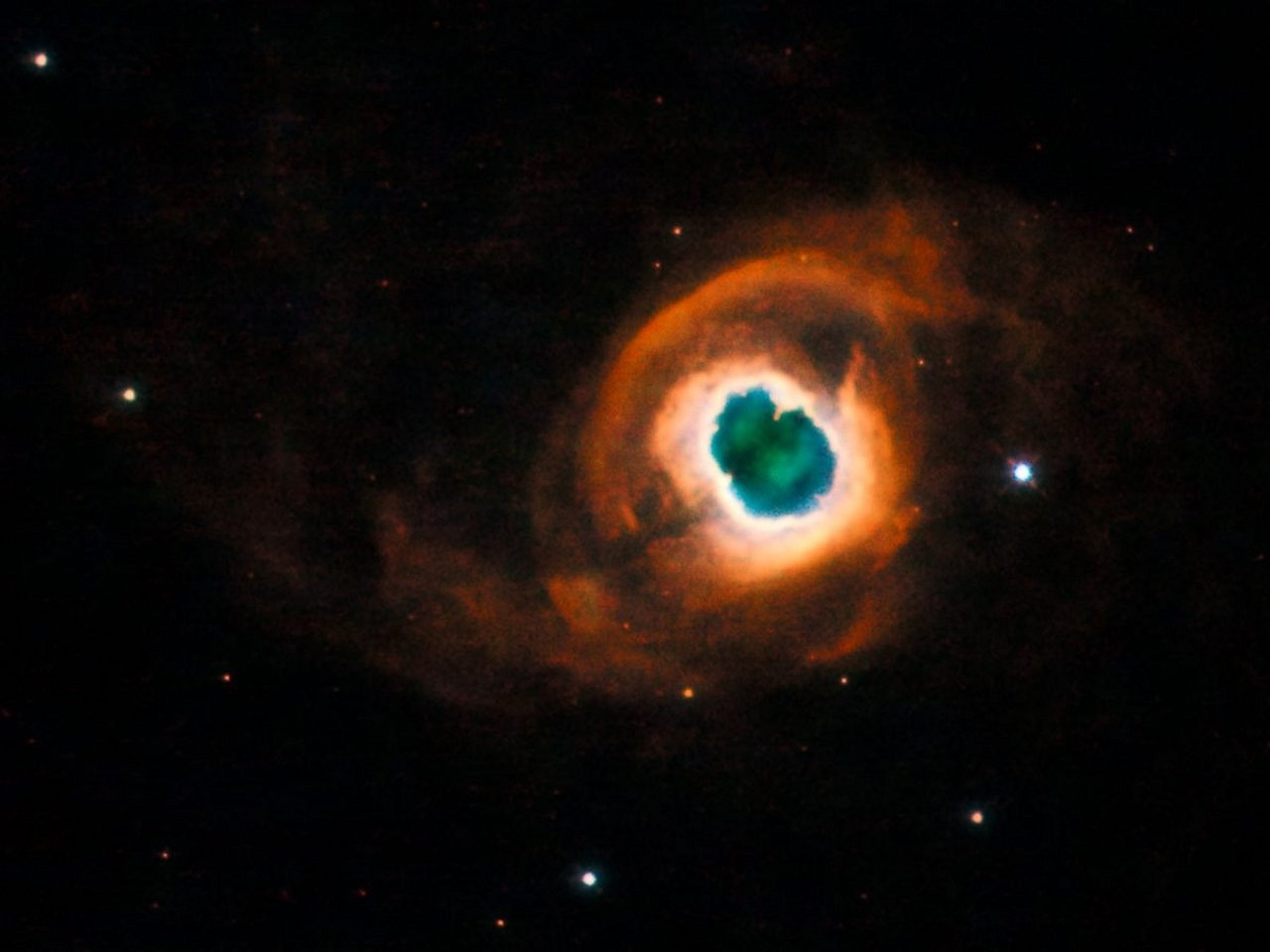
Constellation Projects
Constellation projects are a fantastic way for kids to dive deep into the mysteries of the night sky. Imagine looking up at the stars and recognizing the patterns that have fascinated humans for centuries! By engaging in these projects, children not only learn about the constellations themselves but also develop a sense of wonder and curiosity about the universe. What’s more exciting than creating your very own star map or constellation chart?
One engaging project involves making a constellation viewer. This simple craft can be made using a cardboard tube, some black paper, and a pin. Kids can poke holes in the black paper to represent stars, tape it over one end of the tube, and then look through the other end to see their very own constellations projected onto the wall. It’s like having a mini planetarium right in their room!
Another fun idea is to create a constellation scrapbook. In this project, children can research different constellations, learn their stories, and then draw or collage their representations in a scrapbook. They can include facts about each constellation, like its mythology and the best time of year to see it. This not only enhances their artistic skills but also reinforces their research and writing abilities.
To make the learning process even more interactive, consider organizing a constellation scavenger hunt. You can create a list of constellations for the kids to find in the night sky, perhaps using a stargazing app to help them locate these celestial wonders. As they check off each constellation, they can learn about its history and significance. This hands-on approach makes astronomy feel tangible and exciting!
In addition to these projects, kids can also participate in group constellation mapping. Gather a few friends, and have each child choose a constellation to research. They can then present their findings to the group, sharing stories and interesting facts. This not only promotes teamwork but also enhances their communication skills.
Creating constellations out of everyday materials can also be a great activity. For instance, using glow-in-the-dark stickers or paint, children can recreate their favorite constellations on their bedroom walls or ceilings. Imagine falling asleep under a sky filled with glowing stars that they created themselves!
In summary, constellation projects are more than just crafts; they are gateways to understanding the cosmos. They ignite a passion for astronomy, encourage creativity, and foster a deeper appreciation for the universe. With each project, kids not only learn about constellations but also develop skills that will serve them well in many areas of life.
Q: What materials do I need for constellation projects?
A: Basic materials include cardboard, black paper, scissors, glue, and glow-in-the-dark stickers. You can also use art supplies like markers and paints for creative expression.
Q: Are constellation projects suitable for all ages?
A: Yes! While younger children may need assistance, the projects can be adjusted to suit various age groups by increasing the complexity of the research or the craft itself.
Q: How can I encourage my child to learn more about astronomy?
A: Encourage visits to planetariums, stargazing events, or even using apps that help identify stars and constellations. Engaging in discussions about space can also spark curiosity.
Q: Can these projects be done indoors?
A: Absolutely! Many constellation projects can be done indoors, such as creating a scrapbook or constellation viewer. Stargazing can be done from a window or balcony if outdoor access is limited.

Conclusion: The Joy of Learning Through Crafts
In conclusion, space crafts are not just fun activities; they are a gateway to discovery that can ignite a child's imagination and curiosity about the universe. By engaging in hands-on projects, children can explore the vastness of space, learn about the planets, stars, and the intricate workings of our solar system. These crafts provide a unique opportunity for kids to combine creativity with science, making learning an enjoyable experience.
As they create their own cosmic masterpieces, children develop essential skills such as critical thinking, problem-solving, and teamwork. Whether it's building a solar system mobile or crafting a 3D rocket, each project opens up a world of questions and explorations. Kids learn to ask, "What if?" and "How does that work?"—questions that are fundamental to the scientific process.
Moreover, incorporating recyclable materials into these crafts teaches children about sustainability and environmental responsibility. They learn that creativity can go hand-in-hand with caring for our planet. The joy of crafting isn't just in the final product; it's in the journey of creation, where every glue stick, paintbrush stroke, and cardboard cutout tells a story of exploration and learning.
Ultimately, space crafts can inspire a lifelong interest in astronomy and science. They cultivate a sense of wonder about the universe, encouraging children to look up at the stars and dream big. So, gather your materials, unleash your creativity, and let the adventure of learning through crafts begin!
- What age group are space crafts suitable for? Space crafts can be adapted for various age groups, typically starting from preschoolers to middle schoolers, with complexity adjusted accordingly.
- Do I need special materials for space crafts? No, most space crafts can be made using common household items such as cardboard, paper, paints, and recycled materials.
- Can space crafts be educational? Absolutely! They provide hands-on learning experiences that teach children about astronomy, physics, and environmental science.
- How can I encourage my child to explore more about space? Engage them in discussions about space, visit planetariums, read books, and encourage them to participate in space-themed crafts.
Frequently Asked Questions
- What are space crafts for kids?
Space crafts for kids are fun and engaging activities that allow children to explore the wonders of astronomy through hands-on projects. These crafts can include building models of planets, creating rockets, or even making starry night artwork. They provide a creative way for kids to learn about space while developing their artistic skills.
- What materials do I need for space crafts?
To get started with space crafts, you will need a variety of materials. Common supplies include recyclable items like cardboard and paper, as well as paints, glitters, scissors, and glue. These materials are not only accessible but also encourage kids to think creatively about how to use what they have at home.
- How can I make a rocket with my kids?
Making a rocket with your kids can be a blast! One simple way is to create paper rockets using a piece of paper rolled into a cone shape and attached to a straw. Kids can launch their rockets by blowing into the straw, learning about propulsion in a fun and interactive way!
- What is a solar system mobile?
A solar system mobile is a craft project that visually represents the planets and their orbits around the sun. It’s a fantastic way for kids to understand the distances and sizes of the planets while enhancing their spatial awareness. You can use materials like strings, paper plates, and paints to create a colorful mobile that hangs from the ceiling!
- How do crafts help children learn about astronomy?
Crafts help children learn about astronomy by making complex concepts more relatable and enjoyable. When kids create models of planets or constellations, they engage with the material in a hands-on way, which reinforces their understanding and sparks their curiosity about the universe.
- Can we use recyclable materials for space crafts?
Absolutely! Using recyclable materials for space crafts not only promotes creativity but also teaches kids about sustainability. Items like cardboard boxes, plastic bottles, and old newspapers can be transformed into amazing space-themed projects, making the crafting experience both fun and eco-friendly!
- What are some fun constellation projects for kids?
Fun constellation projects can include creating a star map, building a 3D model of a constellation, or even making glow-in-the-dark star stickers for their bedroom ceiling. These activities encourage kids to identify and recreate their favorite constellations while enhancing their observational skills and understanding of the night sky.



















